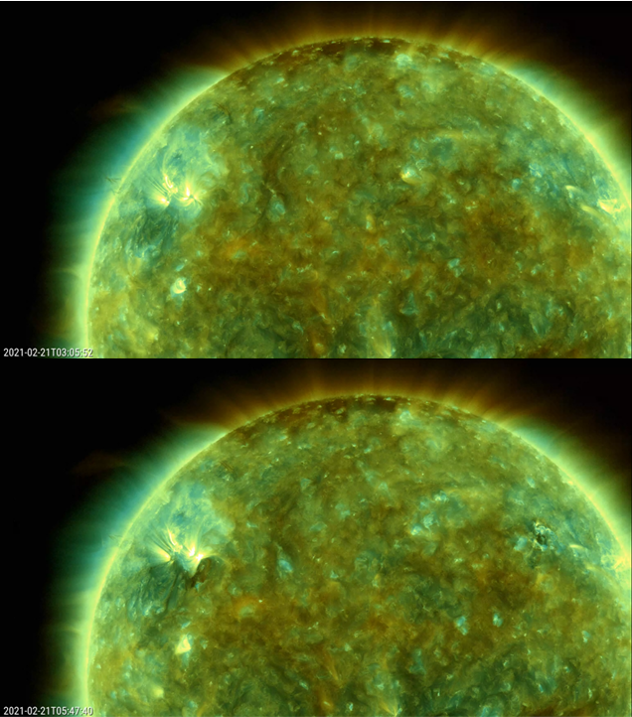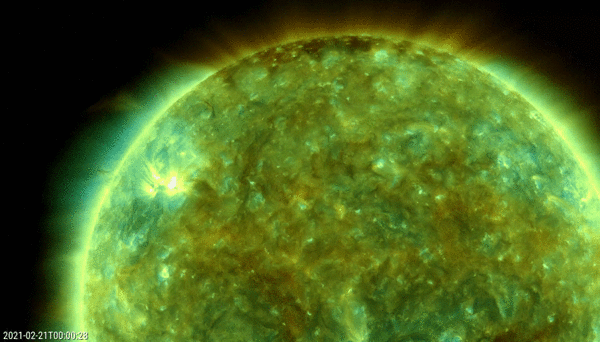A quick look at the coronagraphic images obtained by the SOHO/LASCO instrument revealed a number of coronal mass ejections (CMEs) over the last few days. The figure underneath shows the CMEs on 20 (upper left), 21 (upper right), 22 (lower left) and 23 February (lower right) as seen by the wide-field LASCO/C3 instrument. The last 2 CMEs were the result of respectively a weak filament eruption near the southeast solar limb, and some eruptive activity just behind the northwest solar limb. None of these CMEs were directed to Earth. In the imagery, the bright spot on the right is the planet Venus heading for its superior conjunction with the Sun on 26 March (in plain English: Venus will be exactly at the opposite side of the Sun as seen from Earth).
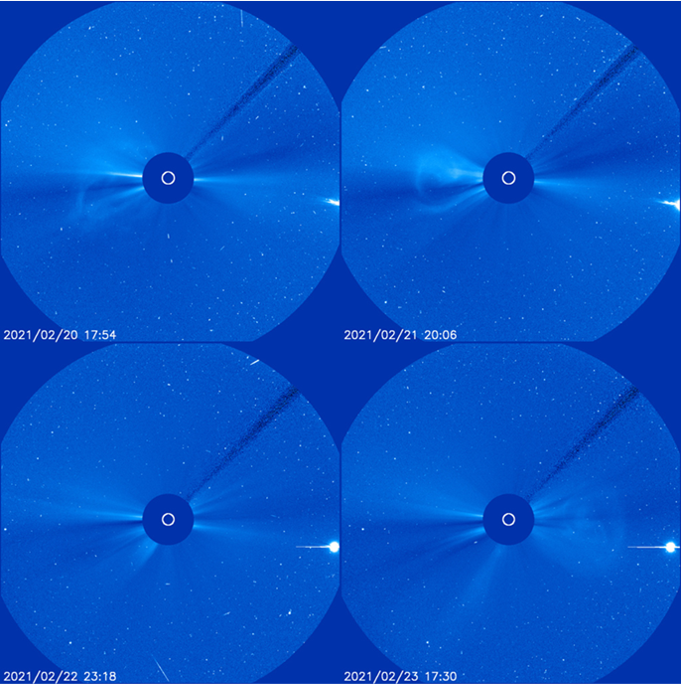
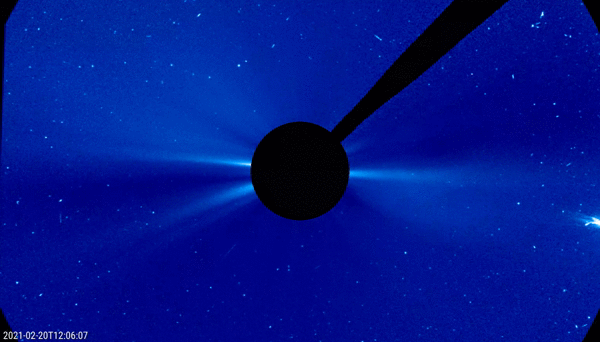
Solar filaments are clouds of ionized gas above the solar surface squeezed between magnetic regions of opposite polarity. Being cooler and denser than the plasma underneath and their surroundings, they appear as dark lines when seen on the solar disk and as bright blobs when seen near the solar limb (then they are called "prominences"). Filaments can appear in e.g. sunspot regions, but they can also appear completely isolated on the solar disk. In the latter case, they can become very long and last for one or more solar rotations. Pending the stability of the surrounding magnetic regions, the longer filaments (15 degrees or longer) eventually may erupt. This is what happened on 20 February, when a 25-degrees long filament in the southern solar hemisphere close to the central meridian erupted. With the Space Weather JHelioviewer (SWHV), SDO/AIA 193 images (temperatures of 1.3 million degrees) were combined with SDO/AIA 171 images (700.000 degrees) into a single clip showing the behavior of the Sun's outer atmosphere. The pre- and post eruption images clearly show the presence of parallel ribbons and coronal dimming, indicating that particles have been ejected into space (see the annotated version). The associated CME was first observed by LASCO/C2 at 11:24UT. It was relatively wide (about 170 degrees, also called a "partial halo") and though the bulk of the CME seemed to be directed behind the Earth, there were some indications that the CME had an earth-directed component. Sure enough, solar wind data from early on 24 February indicated that the earth environment has indeed received a glancing blow from this interplanetary CME.
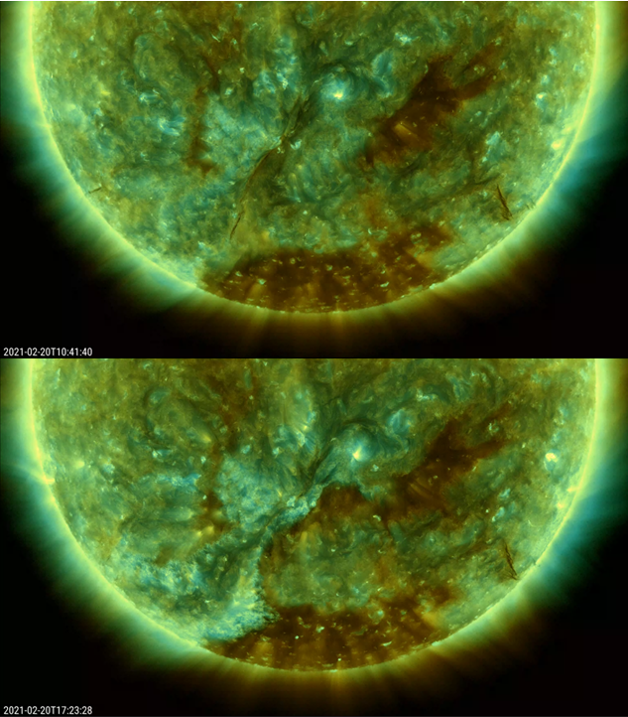
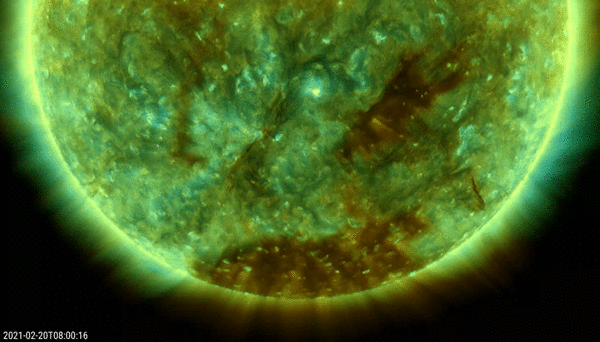
The CME from 21 February had its source in active region NOAA 2803 in the northeast solar quadrant. At the time, this was a very small sunspot group. The eruption took place near the leading portion of the region, where the SDO/AIA images show some coronal dimming. Interestingly, simultaneously, there was also a brief and smaller coronal dimming in the nothwest quadrant. Compared to the 20 February CME, the CME associated with the eruption in NOAA 2803 was slower, less wide and not directed to Earth. The clip also briefly shows a shadow in front of the Sun. This is the Earth eclipsing the Sun as seen from SDO. Due to its orbit, SDO undergoes a few weeks of solar eclipses by the Earth during each equinox every year (see SDO is Go).
